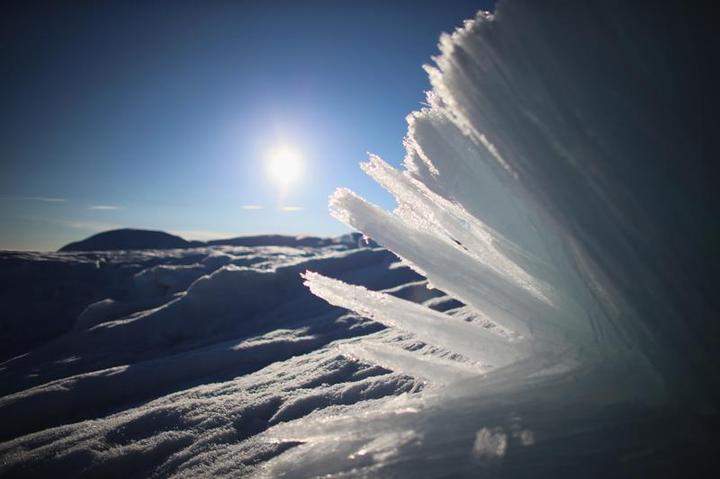TORONTO – Instead of climate change being the sole contributor to large-scale melting of the Greenland ice sheet, a new study suggests that forest fires are also taking their toll on the important ice sheets.

The study, conducted by researchers at Dartmouth College in New Hampshire, concluded that two large-scale surface events — in 1889 and 2012 — were due to large forest fires in those years.
READ MORE: Greenland ice cap melt record latest sign of extreme warming
The melting in the region causes a positive feedback loop: the meltwater goes back into the snowpack and refreezes, causing a lower albedo — the reflectivity of a surface. The sunlight in turn isn’t reflected back into space, but rather is absorbed, causing more melting, and so on.
“The widespread melting of the Greenland ice sheet required the combination of both of these effects — lowered snow albedo from ash and unusually warm temperatures — to push the ice sheet over the threshold,” said Kaitlin Keegan, the study’s lead author, in a press release. “With both the frequency of forest fires and warmer temperatures predicted to increase with climate change, widespread melt events are likely to happen much more frequently in the future.”
Though the ice sheet does see annual melting at low elevations and near the coastline, surface melt is not common. In July 2012, more than 97 per cent of the ice sheet experienced surface melt.
This isn’t the first time a study has examined the two major ice melt episodes.
A study released earlier this year, lead by William Neff, a senior research scientist from the Co-operative Institute for Research in Environmental Sciences at the University of Colorado, found that some of the same weather factors were responsible for both events.
Neff’s paper concluded that for the 2012 melt, the transport of warm air from the west, the water vapour that travelled from from the western Atlantic to the west coast of Greenland by an atmospheric river, and the disturbance of the polar vortex all contributed to heat and moisture over Greenland. Even the particular clouds that were present — thin enough to let sunlight in, but thick enough to trap radiation — played a part.
“What we found in our study was that it took several things to come together,” Neff told Global News.
“Now if you look at any one particular event, you can’t say this event was caused by climate change and only climate change.”
Neff said that in the summer of 1889 there was a major drought across the United States. Forest forest fires were rampant through both northwestern U.S. as well as Canada.
The research — using ice cores — found that the ash’s source was due to large boreal forest fires during the summer in Siberia and North American in June and July of 2012. Those two air masses reached the Greenland ice sheet just before the melt event.
READ MORE: Massive canyon found beneath Greenland ice sheet
Using historical records, the researchers also found there were reports of a large forest fires in the U.S. Pacific Northwest. However, they were unable to determine exactly which forest fires dropped ash onto the ice sheet that summer.
Understanding what is contributing to the large-scale melt of the Greenland ice sheet at the surface is one that begs further research, Neff said.
“It’s a really complicated problem.”



Comments